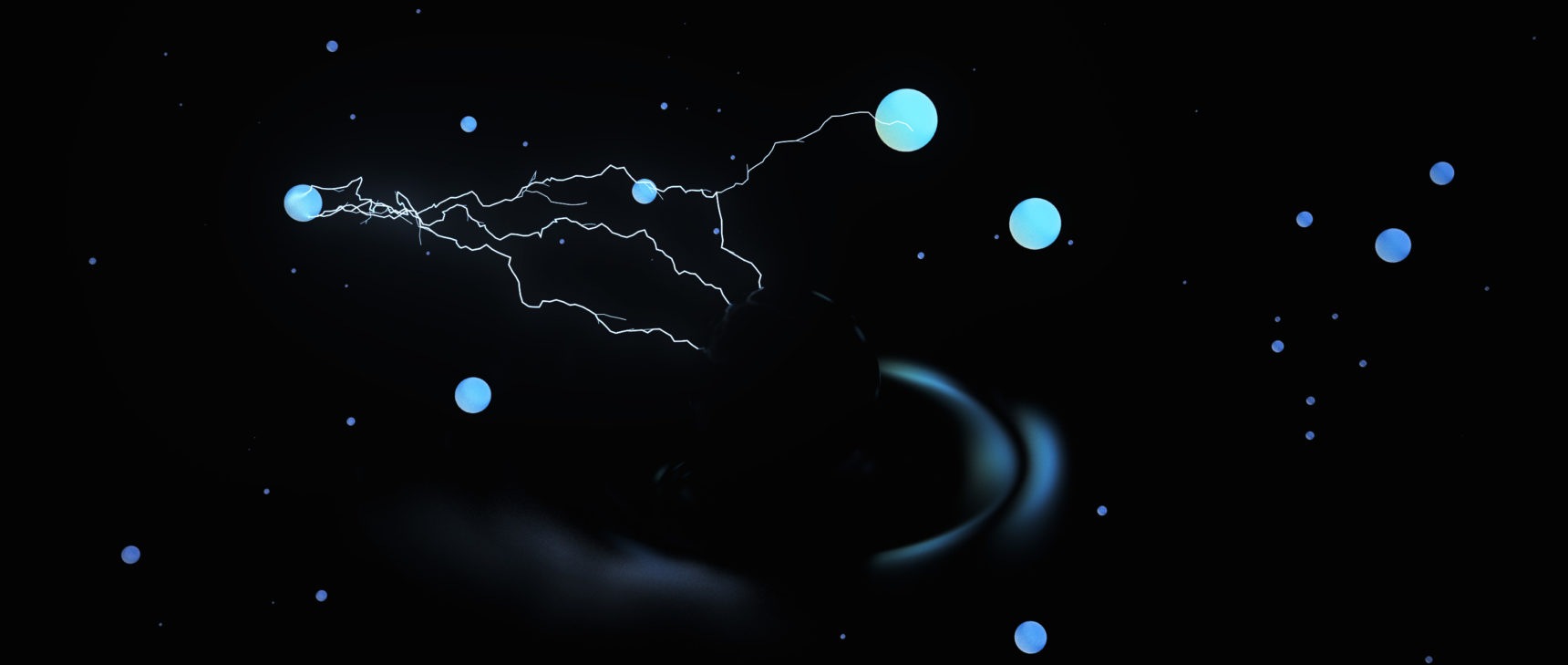In Mathematics, It Often Takes a Good Map to Find Answers

By figuring out where a problem is located, mathematicians can find better routes to a solution.
Introduction
In the late 15th century, Leonardo da Vinci sketched plans for a flying machine that resembled a modern-day helicopter. Today, da Vinci’s “aerial screw” appears fanciful and poignantly ahead of its time. While the device itself was too heavy to fly, the ideas behind it were sound, and those same ideas eventually allowed modern helicopters to take flight. Technology just had to advance over many centuries first.
Mathematicians are often in the same situation as da Vinci: They have big dreams, but mathematical knowledge may not be advanced enough to fulfill them.
Depending on who you ask, for example, present-day mathematicians have nearly as much chance of solving the Riemann hypothesis — the most famous unsolved problem in math — as da Vinci had of building a machine that could actually fly.
“As of yet there’s not been a proposed strategy for handling the Riemann hypothesis that’s even semi-plausible,” said Jacob Tsimerman of the University of Toronto.
But while it may have been obvious in da Vinci’s time that a functional version of the aerial screw would have to wait, often in math it’s not clear what’s possible and what’s not.
Sometimes a problem can seem hopeless, only for a mathematician to realize that the ingredients of a solution have been hiding in plain sight. This is what happened with Vesselin Dimitrov’s recent proof of a problem called the Schinzel-Zassenhaus conjecture, which Quanta covered in our article “Mathematician Measures the Repulsive Force Within Polynomials.”
Mathematicians had long failed to prove the conjecture, and many believed that it would take a new mathematical invention to get there. But Dimitrov cracked the problem by finding a novel way of combining techniques that have been around for more than 40 years.
“Mathematicians are sometimes too quick to dismiss the possibility that we can solve something,” Tsimerman said. “Math is really hard, and people sometimes overlook things.”
So how do mathematicians know if a problem is currently impossible or just really hard? Obviously, there’s no clear way to tell, so they have to rely on clues. And the biggest hint that a problem is out of reach is simply that lots of people have failed to solve it.
Another way to tell is to see whether a problem resembles another. If mathematicians have solved one problem, it boosts their confidence that they can solve another that looks kind of like it.
“Some problems are naturally linked to one another, and you have techniques that can pass between them,” said James Maynard of the University of Oxford. If you’ve figured out how to build a table, you might reasonably suspect you can build a chair.
But some problems look entirely unlike any solved problems. For example, two of the biggest open problems in the field of number theory are the twin primes conjecture and the Goldbach conjecture. They look a lot like each other, but they’re also distinct from anything else mathematicians have managed to prove.
Maynard thinks of them as a pair of islands — a remote archipelago. Their distance from the shores of mathematical knowledge implies that it’s going to take a big discovery to get there.
“You need a much more developed idea to cross an ocean,” he said.
But the resemblance between Goldbach and twin primes suggests they might both yield to the same idea. “It’s my belief that we might solve both at the same time, even if they seem to be quite far from any island I know how to reach with my math techniques,” Maynard said.
Sometimes, mathematicians have learned enough to know what they don’t know. The twin primes and Goldbach conjectures are both questions about prime numbers. Currently, mathematicians lack an all-purpose method for determining whether a whole number has an odd or even number of prime factors. If they can’t distinguish between numbers with an even number of prime factors and ones with an odd number, then they can’t reliably identify the primes themselves — because all primes have an odd number of prime factors. This is known as the parity problem.
“You can be wrong on these things, but I really view the parity problem as the main obstruction to Goldbach or twin primes. If you can do that, I think you’re well on your way to solving” both problems, Maynard said.
Other times, though, it’s not even clear what it would take to solve a problem — it’s only evident mathematicians can’t do it. The Riemann hypothesis is like this. It’s a problem about the distribution of prime numbers, and it’s entirely mysterious.
“It’s hard for me to speculate on how the Riemann hypothesis will be solved, but I think it’s important to acknowledge that we don’t know,” said Curtis McMullen of Harvard University.
When problems are so far off the map that mathematicians can’t even imagine how to reach them, the challenge is more than coming up with a better boat — it’s coming up with a better map. If you don’t know where an island is located, no amount of ingenuity will get you there. But once you’ve located it, you might find a surprising route that will bring you to its shores.
This was the case with the most celebrated mathematical result of the 21st century — Grigori Perelman’s 2003 proof of the Poincaré conjecture, a problem about determining when a three-dimensional shape is equivalent to the three-dimensional sphere. The problem had stymied mathematicians for a century. Then in the early 1980s, William Thurston placed the Poincaré conjecture in a broader theoretical landscape — and from there, mathematicians began to discover new ways to approach it.
“I think one of the reasons we were stonewalled was not because we didn’t have the right techniques, but because the problem wasn’t put in the right conceptual framework,” McMullen said. “The changed question suggested the changed techniques.”
In other words, if a new map reveals a surprising sea route to your destination, it might occur to you to build a ship.
Yet there’s also no guarantee that a problem can be solved at all. For example, a certain conjecture suggests that the digits of pi are uniformly distributed, so the numbers 0-9 each appear with the same frequency overall. Experimental computations back up the conjecture, but mathematicians have no idea how to prove it — and they may never.
“There’s a very high probability that the conjecture is true, but its truth might be an accident that’s very hard to access by pure logic,” McMullen said.
Unfortunately for mathematicians, many conjectures concerning basic mathematical phenomena — including the fundamental behavior of prime numbers — may not be resolvable.
“There’s this vast collection of problems that are just true because they probably should be, and we may never know the answers to them because the phenomena we’re seeing don’t have a logical explanation,” McMullen said. “It’s almost like a secret from the public, that we can easily write down hundreds of mathematical problems that will almost certainly never be solved in the next thousand years.”
Given all this uncertainty, mathematicians work to develop a sense for what kinds of problems they have a chance of solving using the centuries of techniques available to them.
“It’s important for you to have a highly developed intuition about how these ideas fit together and how you can use some combination of existing techniques,” Maynard said.
One counterintuitive way Maynard does this is by setting aside time to remind himself why existing techniques haven’t worked against math’s biggest open problems.
“I often spend Friday afternoons just thinking about trying to directly attack some famous problem,” he said. “This is much less because I think there’s a realistic way of solving the problem, but more because I think it’s important for me to understand where plausible techniques fail.”
Of course, even the most carefully developed intuition about what’s possible in mathematics will miss things — maybe many things. The best evidence for this is that it’s not uncommon to have proofs like Dimitrov’s that unexpectedly settle hard questions using older mathematical tools.
And to mathematicians, this is sometimes the best kind of result of all. After all, it was surely an achievement in the early 20th century when human beings finally figured out how to build a helicopter. But imagine how poetic it would have been if the technology for constructing such a machine had been available to da Vinci all along.
“Sometimes this can be more exciting, because techniques the mathematical community understood pretty well end up being maybe more powerful than was appreciated,” Maynard said.



